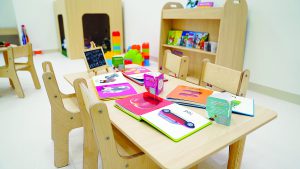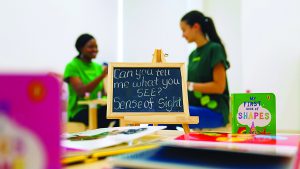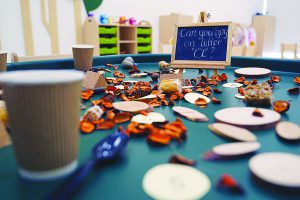DUBAI/GULF TIME
Pedagogy is the core of Dibber, which is the #1 Scandinavian education expert in the UAE, and heart culture is the foundation for the learning experience that children and students encounter every day at Dibber. Shauna Ross, Dibber’s Chief Pedagogy Officer, who was in Dubai, said, “The Nordic way of learning encourages outdoor exploration so children can experience firsthand what they have been exposed to in the classroom.”
Ross is an educator with multi-cultural experience, as she has worked with schools across Seoul, Abu Dhabi, Hiroshima, Guangzhou and Norway. Her enthusiasm, coupled with her spontaneous flair for connecting with children, makes it an enriching learning experience for the little ones.
Here are excerpts from a free-flowing conversation with the Gulf Time.
Please narrate any personal experiences close to your heart as a pedagogue at Dibber…
I have so many stories that are close to my heart and serve as a reminder of why I do what I do. But, I will tell one experience from my time teaching high school. One of my students was very passionate about art, so I often asked her about the different pieces she was working on. A few months into the school year, I started to notice that she was becoming a bit withdrawn. I was concerned, so I asked her if she was okay and let her know that if there was anything she ever wanted to talk about, she could always come and speak to me. She told me that she had to stop attending her private art lessons because of financial concerns in the family. This was devastating to her because she felt like she no longer had a creative outlet and did not feel fully herself. I encouraged her to continue to paint even though she could no longer attend her lessons. She just needed some supplies and some inspiration, so I suggested she reach out to the art teacher at the school and see if she could borrow supplies. Then I told her to find something that inspired her and focus on painting it and independently strive to improve her technique. I checked in with her periodically to see how things were going, and she said she found some inspiration and she was pleased with how the artwork was coming along.
A few months later, my time at the school came to an end. On my final day, the student showed up with what appeared to be a vast, covered canvas. She told me how grateful she was for my support and that she wanted to show me her finished work. When she unveiled it, it was a portrait of me. I was the source of inspiration she chose. It is 13 years later, and I still do not have the words to describe how I felt at that moment. I was reminded of the importance of relationship building and truly seeing all students as the people they are as I do my part to help them become the people they will be.
How would you differentiate the Dibber Heart Culture in the early childhood education spectrum in your thoughts…
I believe all preschools, schools, universities, or any other educational institution or entities value safe and inclusive spaces. The difference with Dibber Heart Culture is that it is a systematic working method rooted in the building of self-worth, empathy, and inclusion.
First, the children get to know how valuable they are, just as they are. As they start to interact with another child, they start to understand that different people have different ideas and that those differences are ok. They start to feel empathy for others. Then as those children have even more interactions in a larger context, they understand that they are a part of a community.
In that community, everyone has a voice and should feel included. Through the constant fostering, strengthening, and maintenance of Heart Culture, our children have a heart for themselves, a heart for others, and a heart for the world.
It would be great if you could share with us how your personal life journey has shaped you as an educationist and now a pedagogue.
My personal journey with education shaped me as an educator and framed my perspective on what a quality educational experience should be for a child. There was a duality in my journey. On one hand, I was raised in a family who were staunch believers in education and freedom of thought. My grandmother exposed me to other cultures at a very young age. She wanted me to learn as much as possible about the world and its people, and she always encouraged me to engage in independent study, ask questions, and try to solve problems. With her, I had a voice and support as I was trying to make sense of the world around me.
On the other hand, my more “formal” education or “school” education was quite the opposite. It was a blueprint for what a child should not experience. For example, I quit pre-school because I felt unsafe around the staff, and I was in the 8th grade before I recall having an educator that I felt cared about me as a person and wanted to know my opinion about things. It was the first time I recall having an impact on my education instead of just being taught to memorize facts, dates, and formulas. It was also the first time I felt no bias from one of my teachers. This teacher, Mrs Porter, was fair and if she had a favourite, we never knew it because she treated all of us like we were the favourite.
I always remember thinking that children should feel the way my grandmother and Mrs. Porter made me feel…valued, respected, acknowledged, supported, understood, and championed. My grandmother and Mrs Porter constantly reinforced that I could do something, not that I could not do something. They saw me as capable and competent. In my career, it has been my aim to make sure every child who entered my classroom or school felt how they made me feel.
 The Gulf Time Newspaper One of the finest business newspapers in the UAE brought to you by our professional writers and editors.
The Gulf Time Newspaper One of the finest business newspapers in the UAE brought to you by our professional writers and editors.


